16 cars had started in the top category at the anniversary race. In the coming year, BMW, Lamborghini, Alpine and other manufacturers will also join them.
But every beginning is known to be difficult. Before they were introduced, the regulations for the hypercars were extensively negotiated. A number of hurdles had to be overcome - including Aston Martin's withdrawal, the fusion with the rule-makers of the US IMSA championship and, last but not least, the sparsely populated first two hypercar years. Because in 2020 and 2021 Toyota started as the only factory team against a handful of inferior privateers and old cars from the previous LMP1 class. The heyday of hypercars that has now begun was therefore long awaited.
The development at Le Mans in the mid-1990s was very similar. A long road had to be traveled before Audi, BMW, Mercedes, Toyota, Nissan and Panoz fought side by side for overall victory. After the Group C regulations were lifted in 1994, near-series GT cars were planned. But first the Dauer-Porsche - a revised 962 from Group C times - won by the team using a loophole in the rules. In the following year, the first emerging GT1 vehicles fought against thoroughbred prototypes of the so-called WSC class, which had the advantage on paper. However, in the all-wet 1995 edition of Le Mans, the performance distinctions between categories blurred and a GT1 car ended up coming out on top.
McLaren won the 24 Hours of Le Mans with the unforgettable F1 GTR. The street version of the super sports car was the fastest production car in the world until the Bugatti Veyron was introduced. And the racing version was also successful from the start. At that time, the F1 GTR dominated the BPR Global GT Series, the forerunner of the later FIA GT. All seven chassis that had been built up to that point were sent to Le Mans. There, McLaren put on the crown by winning the first attempt at the Sarthe due to the great ballance of its car. The team name Kokusai Kaihatsu Racing sounded Japanese, but was due to the sponsor. The team was the British team Lanzante Motorsport, which also successfully launched the McLaren F1 GTR in the BPR Global GT Series. The car's designer was the well-known Gordon Murray, who was also responsible for a number of McLaren Formula 1 cars, among other things. When Murray designed the road car, he never envisaged a racing version and later had to be convinced of the idea. The Le Mans victory at the latest should have shown that the decision was the right one. The car was driven by Yannick Dalmas, JJ Lehto and Masanori Sekiya. The latter two thus achieved the first Le Mans victory for a Finn and a Japanese respectively.
With the transition from the BPR Global GT Series to the FIA GT, the racing version of the F1 GTR has been extensively modified. The interventions were visually recognizable above all in the longer body designed for downforce. However, the 1995 Le Mans winning car was immediately withdrawn from service and did not contest any more races.
The McLaren F1 GTR could remain the British manufacturer's only winning car for a long time to come. McLaren has not yet announced a hypercar program. At least for the GT3 class introduced in 2024, McLaren would have a suitable car, but would need the organizer's blessing to get a starting place. The ACO has announced that it will prioritize manufacturers with a hypercar commitment when awarding the GT3 seats.
Until then, McLaren fans will have the model from Solido, which released the Le Mans winner in scale 1:18. The front wheels can be steered, the doors can be opened and the interior has been faithfully reproduced.
McLaren F1 GTR #59 Winner 24h LeMans 1995 Lehto, Dalmas, Sekiya 1:18 Solido, RRP €59,95, item-no.: S1804106






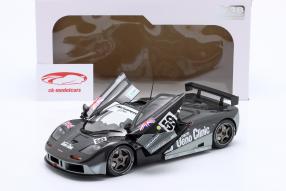
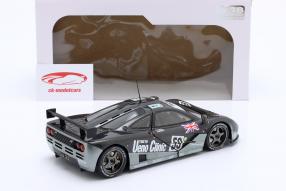
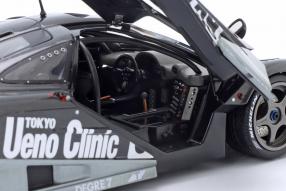
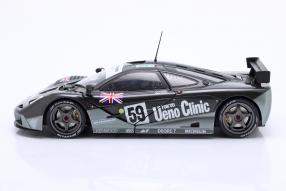
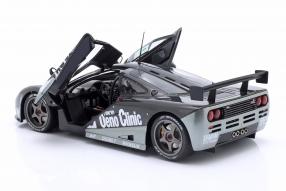



 [09.08.2023] Final victory after a difficult season: Marco Wittmann's 2022 DTM BMW
[09.08.2023] Final victory after a difficult season: Marco Wittmann's 2022 DTM BMW [03.08.2023] For the 50th birthday of the 911 there is new technology with old charm, purism and endless driving fun
[03.08.2023] For the 50th birthday of the 911 there is new technology with old charm, purism and endless driving fun

